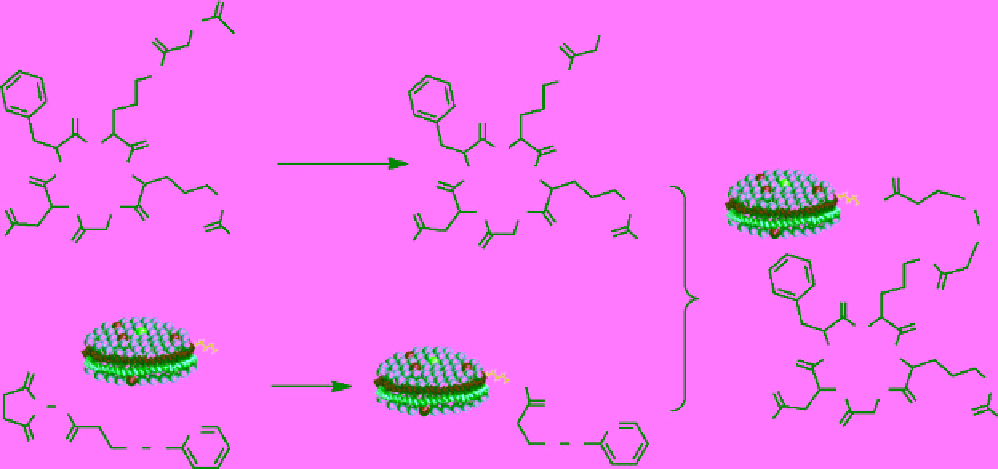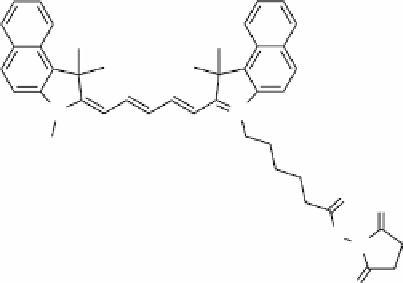Chemistry Reference
In-Depth Information
O
S
SH
O
O
NH
NH
O
O
O
O
Hydroxylamine
H
H
O
NH
HN
O
NH
HN
O
NH
O
S
S
NH
HN
O
NH
HN
NH
HN
O
O
HN
HN
NH
2
HO
H
NH
2
HO
O
O
O
O
rHDL
O
H
NH
2
NH
HN
O
O
HN
NH
O
NH
HN
O
NO
O
HN
N
NH
2
N
HO
O
S
S
O O
SS
rHDL-RGD
ScheMe 16.7
rHDL was modified with RGD via formation of a disulfide bond. Adapted from Ref. [46].
(a)
(b)
O
O
+
I
O
N
NH
2
Cl
-
S
O
(c)
N
N
+
Cl
-
O
O
O
N
O
fIGure 16.11
(a) Structure of Traut's reagent, which reacts with amine groups and provides a thiol group. (b) structure of the cross-
linker succinimidyliodoacetate, which can react with thiol groups. (c) structure of the NHS ester of Cy5.5.
group derived from the venom of the Leiurus quinquestriatus scorpion. CTX is a 36-mer peptide (sequence:
MCMPCFTTDHQMARKCDDCCGGKGRGKCYGPQCLCR) with a high affinity for neuroectodermal cancer cells
[48-50]. CTX was pre-functionalised with Traut's reagent and covalently attached to the particle surface via a succinimidyli-
odoacetate cross-linking (Figure 16.11, Scheme 16.8) [47]. To attach an NIR dye, Cy5.5 NHS ester was used. The particles
have a mean diameter of 13.5 nm and an r
2
of 126 mM
-1
s
-1
.
In vitro
studies showed the functionalised nanoparticles are taken up by gliosarcoma cells after 1 h incubation.
In vivo
,
MRI shows heterogeneous darkening of the gliosarcoma xenograft tumour in a mouse model (Figure 16.12).
Ex vivo
NIRFI
confirmed the localisation of the nanoparticles in the tumour 48 h after injection. Biodistribution studies showed that at 72 h
after injection, the liver, spleen, and kidneys exhibited significant NIRF, but none was observed in the lungs or heart. Liver
enzyme serum levels and blood counts of the mice showed the particles are nontoxic to the liver.




